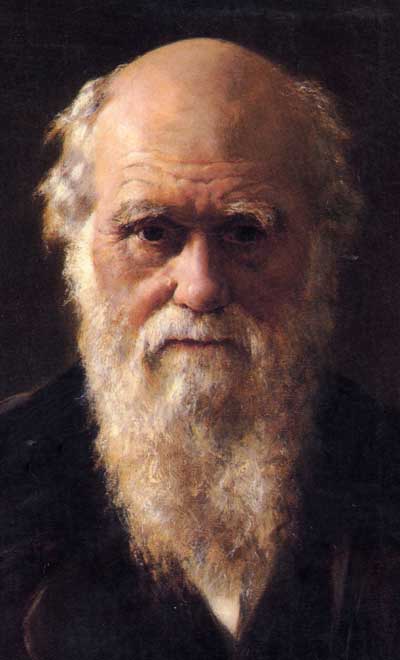
ScienceDaily (Jan. 11, 2010) — Although Charles Darwin is most well-known for his book On the Origin of Species, in which he described the process of natural selection, he greatly contributed to many specific fields within biology. As the bicentennial anniversary of Darwin's birth comes to a close, the December issue of the American Journal of Botany presents two papers exploring botanical history before the time of Darwin, Darwin's contributions to botany, and what scientists have discovered in the subsequent years following Darwin's first presentation of his many provocative ideas to the scientific community.
In "The 'Sensational Power' of Movement in Plants: A Darwinian System for Studying the Evolution of Behavior," Dr. Craig Whippo and Dr. Roger Hangarter discuss Darwin's research on plant movement. When Darwin first presented his theory of evolution, many opponents of the theory argued that evolution could not account for the acquisition of behavioral traits. Darwin believed that if he could present a materialistic basis for behavior, he could then explain how evolution acted on it. He used plant movements to test his theories of the evolution of behavior, and, as in many other areas of biology, Darwin's plant physiology research contributed to a paradigm shift in our understanding of the biological basis of insect, plant, and microbial behavior.
While studying carnivorous sundew plants, Darwin was shocked to learn that the plant was more sensitive to touch than human skin and could even distinguish between objects. Darwin's many experiments convinced him that plants were actively responding to the environment and that their movements were not a passive consequence of the environment acting on the plant. Darwin attempted to explain all plant movements as modified forms of circumnutation, a process whereby a plant or plant part moves in repeated revolving arcs. He believed that these movements occur as a result of the plant's response to external stimuli, which are sensed in the root and shoot apices. Darwin advanced the notion that these influences are then transmitted to other parts of the plant. Although research has since shown that this explanation of plant movement is not complete, Darwin's idea of a transmittable influence in plants led to the eventual discovery of auxin, a hormone that plays an essential role in many growth processes in plants.
"Plant biologists often cite Darwin for pioneering the study of plant movements and discovering that a transmissible substance was involved in many plant movements, later found to be auxin," Hangarter said. "In researching the material for this paper, we were surprised to learn the extent to which Darwin's predecessors and contemporaries had contributed to the same areas of study with little recognition. However, what struck us the most was to learn that his plant movement studies were largely motivated by his desire to understand how complex animal behaviors could evolve through natural selection."
In the AJB's second article, "'The Orchids Have Been a Splendid Sport' -- An Alternative Look at Charles Darwin's Contributions to Orchid Biology," Dr. Tim Win Yan, Dr. Joseph Arditti, and Dr. Kenneth Cameron explore Darwin's observations on orchids. Jacob Breynius once stated, "If nature ever showed her playfulness in the formation of plants this is visible in the most striking way among the orchids…Nature has formed orchids in such a way that, unless they make us laugh, they surely excite our greatest admiration."
Darwin's book The Various Contrivances by Which Orchids are Fertilized by Insects, was his first to be published following On the Origin of Species. In this book, Darwin discussed various peculiarities of orchids he observed, and he stated that although some people might use these peculiarities as examples of new organs specially created, a true understanding of these organs shows that they are modified forms of organs found in other plants. Perhaps due in part to the fact that evolution provides the framework that allows us to understand the living world, much of Darwin's research that was not explicitly related to his theory of evolution was nonetheless used to justify evolution by natural selection or was based on the premise of the theories and mechanisms.
Darwin's explorations into orchids also led him to state that orchid pollen has an "injurious and poisonous" effect on flowers. What Darwin did not know at the time was that one of the substances in the pollen that plays a role in the death of the orchid flower is auxin, as noted in the Hangarter article. Not only can much of our understanding of the natural world be traced back to Darwin, but also much of our current botanical knowledge.
"What impressed me about Darwin's work with orchid is how much more he studied and understood about orchids than just pollination," Arditti said. "But what amazed me was his prescient statement that orchid seeds depend on a fungus for germination. He made this statement on what seems to have been either deep understanding or little more than a hunch long before the French botanist Noël Bernard actually discovered orchid mycorrhiza."
No comments:
Post a Comment